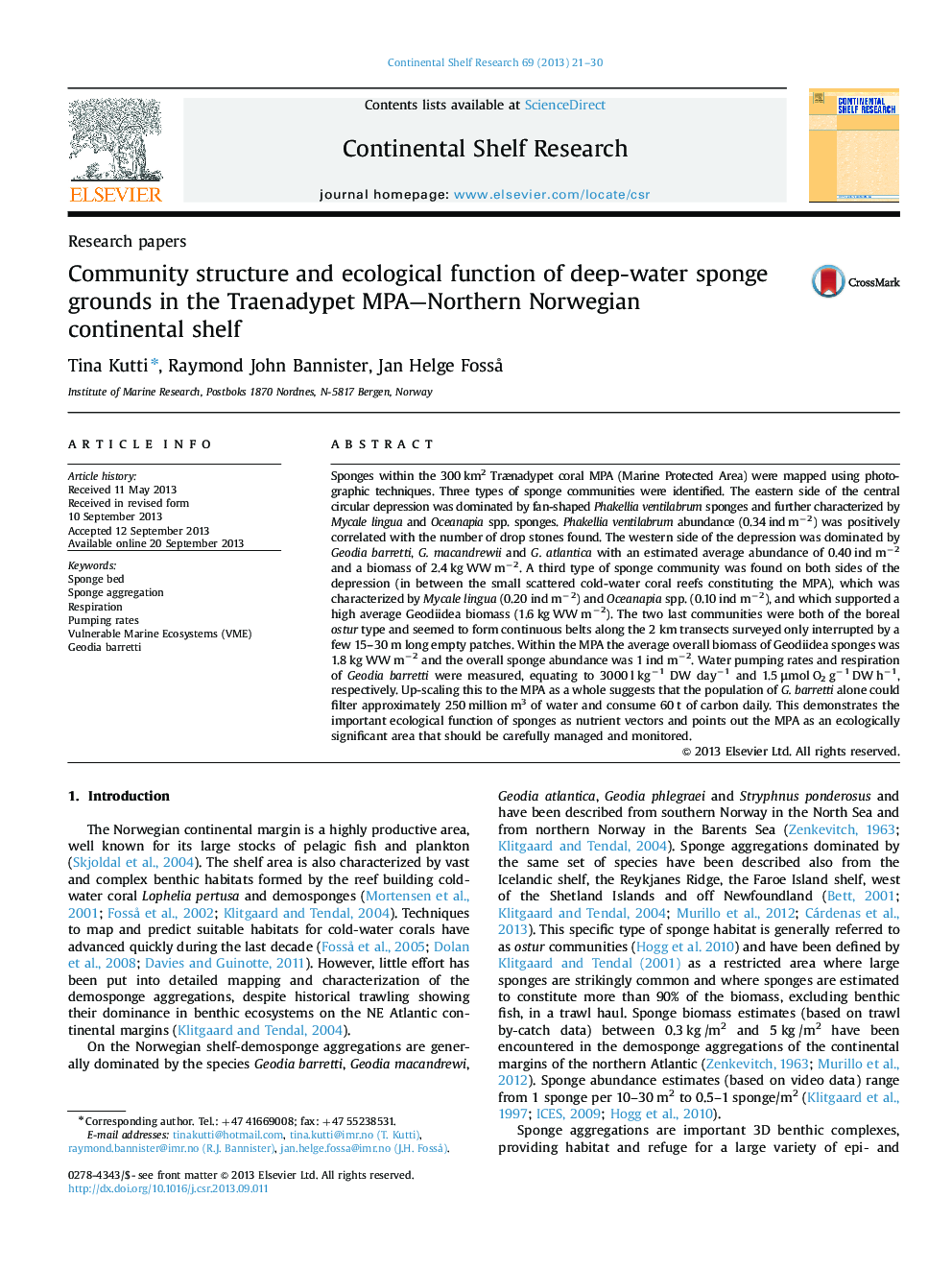| کد مقاله | کد نشریه | سال انتشار | مقاله انگلیسی | نسخه تمام متن |
|---|---|---|---|---|
| 4532033 | 1626143 | 2013 | 10 صفحه PDF | دانلود رایگان |

• Traenadypet MPA, north Norwegian shelf, harbors well-developed climax sponge communities dominated by Geodiidea sponges.
• Sponge grounds cover areas in the excess of 50 km2 with average Geodiidea biomasses ranging between 1 and 3 kg m−2.
• High water pumping rates and metabolic activity indicate that sponges have a considerable influence on BBL nutrient dynamics on the shelf.
Sponges within the 300 km2 Trænadypet coral MPA (Marine Protected Area) were mapped using photographic techniques. Three types of sponge communities were identified. The eastern side of the central circular depression was dominated by fan-shaped Phakellia ventilabrum sponges and further characterized by Mycale lingua and Oceanapia spp. sponges. Phakellia ventilabrum abundance (0.34 ind m−2) was positively correlated with the number of drop stones found. The western side of the depression was dominated by Geodia barretti, G. macandrewii and G. atlantica with an estimated average abundance of 0.40 ind m−2 and a biomass of 2.4 kg WW m−2. A third type of sponge community was found on both sides of the depression (in between the small scattered cold-water coral reefs constituting the MPA), which was characterized by Mycale lingua (0.20 ind m−2) and Oceanapia spp. (0.10 ind m−2), and which supported a high average Geodiidea biomass (1.6 kg WW m−2). The two last communities were both of the boreal ostur type and seemed to form continuous belts along the 2 km transects surveyed only interrupted by a few 15–30 m long empty patches. Within the MPA the average overall biomass of Geodiidea sponges was 1.8 kg WW m−2 and the overall sponge abundance was 1 ind m−2. Water pumping rates and respiration of Geodia barretti were measured, equating to 3000 l kg−1 DW day−1 and 1.5 μmol O2 g−1 DW h−1, respectively. Up-scaling this to the MPA as a whole suggests that the population of G. barretti alone could filter approximately 250 million m3 of water and consume 60 t of carbon daily. This demonstrates the important ecological function of sponges as nutrient vectors and points out the MPA as an ecologically significant area that should be carefully managed and monitored.
Journal: Continental Shelf Research - Volume 69, 15 October 2013, Pages 21–30